
The story of how a Pan American Airways B-314 flying boat, caught in the South Pacific, made an unplanned flight around the world following the Japanese attack on Pearl Harbor on December 7, 1941. Flying in total secrecy and radio blackout, Captain Ford and his 10 man crew flew over 31,500 miles in six weeks, avoiding enemy action in their effort to return safely to the United States. An astounding feat in 1941!
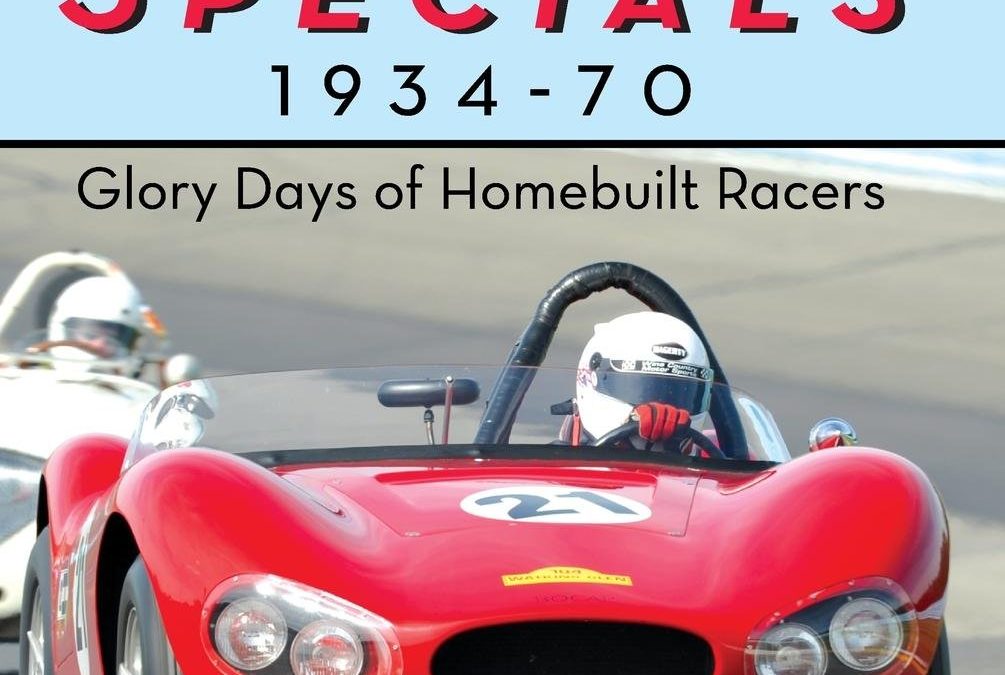
Once upon a time, there was a guy named Max Balchowsky who decided he wanted to beat Ferrari and Jaguar at their own game-road racing. The trouble was, he didn’t have the cash for a factory racer. So he built his own. Using a Ford homemade tube frame, a souped-up Buick V-8 and running on recapped whitewalls, Ol’ Yaller whipped them all.
Welcome to American Road Race Specials 1934-70. These were the glory days of road racing in the United States, from the first races between imported MGs to the world-winning Made-in-the-USA Scarabs and Chaparrals, and on toe the downfall of the Shadow.
This is the story of the men who built and ran their own homemade cars in pioneer SCCA and Cal Club races on town streets, airports and then the first purpose-built American racetracks. Here is Jim Hall, Lance Reventlow, Ken Miles, Carroll Shelby, Ak Miller, Balchowsky, Troutman and Barnes, Phil Hill, Dan Gurney, Roger Penske, George Follmer, and all the rest. . . .
And the cars: Ol’ Yaller, Cunningham, Scarab, Chaparral, Kurtis, Devin, Zerex Special, Bocar, Caballo de Hierro, Pooper, Shadow, Ferraris with Chevy V-8s and every other possible chassis-engine combination a racer could think of. Some were crude, others deceptively homespun; most were half hot rod, half sports car-all of them were unique and built with passion.

Although the phrase “trailer trash” is catchy and kitschy in describing mobile home living, this revealing peek into a stereotype that has dogged the mobile home since its earliest days challenges that label and defends the honor of the trailer home. Via nearly 400 colorful and fun images―including 300 postcards, home advertising, emblems, newspaper articles, memorabilia, and other items of interest―the novel point is made: the mobile home most assuredly deserves greater respect. Ten chapters explore features of mobile home living ― from the history, residential parks and amenities, and mobile mansions to interior and exterior designs, and the people who live in them. So, keep an open mind. You may come away with a new attitude about the mobile home.
Autobooks-Aerobooks 2900 W. Magnolia Blvd. Burbank, CA 91505 (818) 845-0707 Hours: Tuesday-Friday 10:00 AM – 6:00 PM Saturday 10:00 AM – 6:00 PM Closed Sunday and Monday Accept Credit Cards gift cardYES, We have Gift Cards - Click Here AUTOBOOKS IS OPEN...
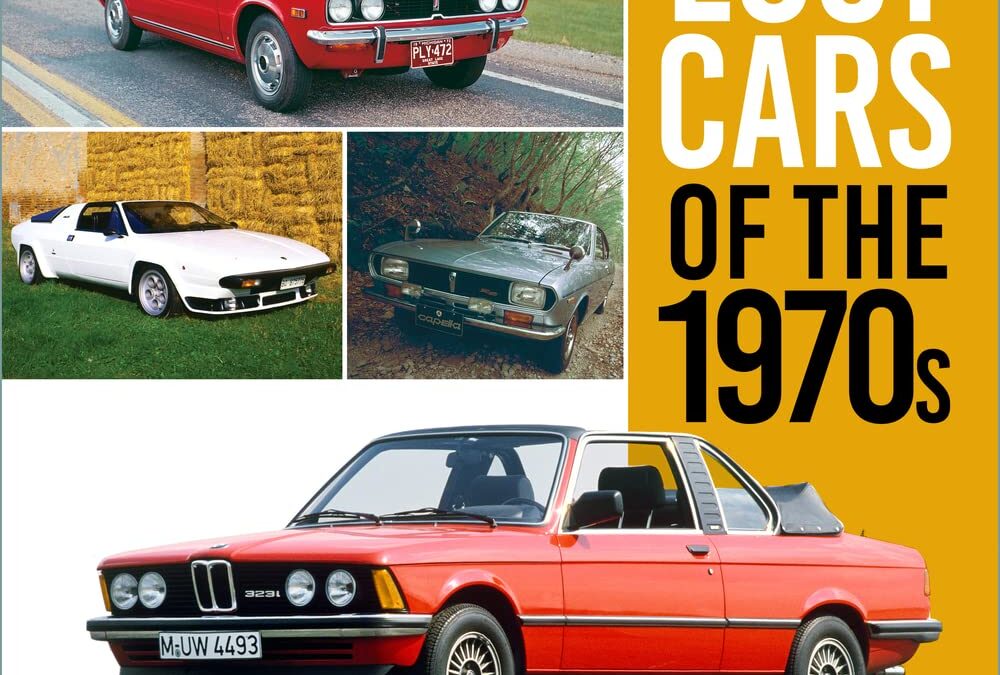
Sixty diverse cars, sixty fascinating stories, sixty contrasting specifications, just one uniting factor: they’re all forgotten, neglected or misunderstood classics.
The casualties and sideshows of motoring history from around the world finally get the recognition they deserve. Revisit a motoring decade when fuel economy was top priority, the rotary engine rose and fell, and car-buyers wanted a hatchback and the latest styling and safety features. Those that made the grade found global popularity – now meet the cars left behind.
Italy’s clever plan to update the Mini; the French GT coupé with an extra seat; America’s electric runabout that paved the way for Tesla; Britain’s stylish, homespun sports cars; the Japanese limo meant to do 25mph; the ‘safety car’ turned into a Polish workhorse… each one enjoys a detailed review giving the context and thinking around them.
The terrific archive images also highlight thirty 1970s design specials and one-offs – even more amazing cars pointing to a future that never quite came true.

- The ultimate insider’s guide to Los Angeles; features interesting and unusual places not found in traditional travel guides
- Part of the international 111 Places/Shops series with over 650 titles and 3.8 million copies in print worldwide
- Appeals to both the local market (nearly 10 million call Los Angeles home) and the tourist market (over 42 million people visit Los Angeles every year)
- Fully illustrated with 111 full-page color photographs
- A revised and updated edition
“In Los Angeles, everyone is a star.” – Denzel Washington
For more than a century, seekers of sun and celebrity from around the world have flocked to this sprawling metropolis on the Pacific, which Dorothy Parker once described as “72 suburbs in search of a city.” But beyond the red-carpet reputation and Tinseltown trappings is a west coast wonderland teeming with unexpected cultural experiences, iconic architecture, gorgeous open spaces, quirky museums, hidden vistas, unconventional art, and obscure stories about the starlets, moguls, personalities, and players who have made Los Angeles their playground. This unusual guidebook explores 111 of the city’s most interesting and unknown places and experiences: wander a serpentine path in a spiritual quest of your own making; channel your inner cowboy at a tried and true honky tonk bar; pay homage to the Dude at the bungalow where the big Lebowski lived; turn your car tires into musical instruments on the country’s only ‘musical’ road; sleep with the ghosts of Marilyn Monroe and Charlie Chaplin; view a constellation of stars more vivid than anything Hollywood has to offer. From the San Gabriel Mountains to the Pacific Ocean, Angelenos and visitors will fall in love with the real Los Angeles. Adventures beckon. Surprises await. Just imagine how much more scintillating your dinner-party storytelling will be
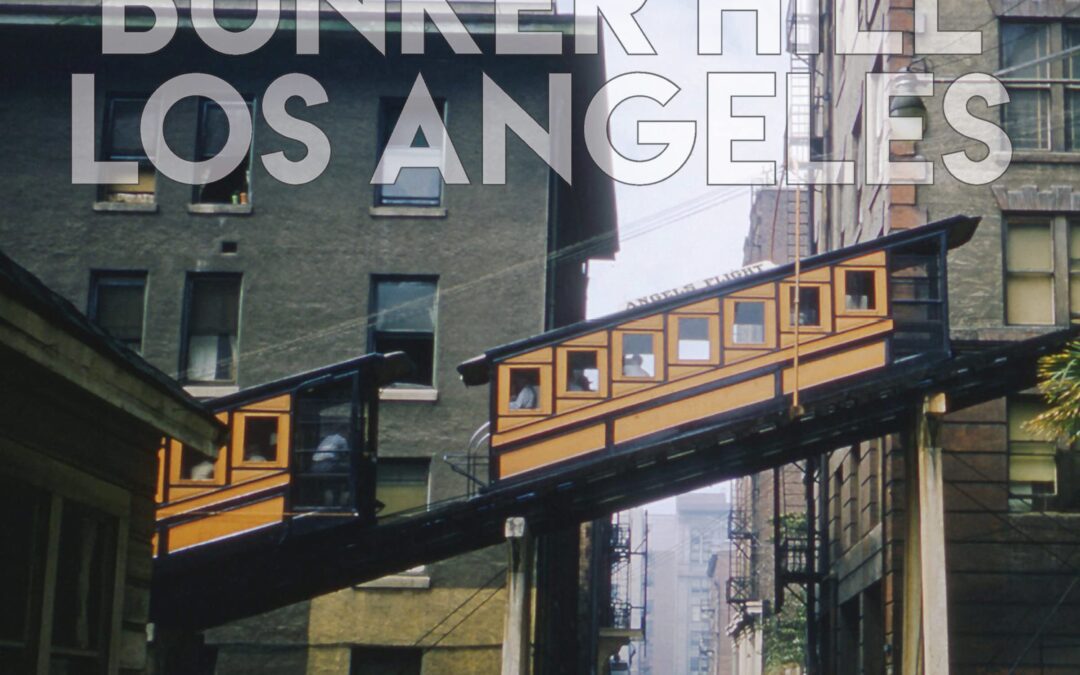
Bunker Hill is the highest point of downtown Los Angeles, both literally and figuratively. Its circle of life has created a continuous saga of change, each chapter rich with captivating characters, structures, and culture. In Bunker Hill Los Angeles: Essence of Sunshine and Noir, historian Nathan Marsak tells the story of the Hill, from the district’s inception in the mid-19th century to its present day. Once home to wealthy Angelenos living in LA’s “first suburb,” then the epicenter of the city’s shifting demographics and the shadow and vice of an urban underbelly, Bunker Hill survived its attempted erasure and burgeoned as a hub of arts, politics, business, and tourism.
As compelling as the story of the destruction of Bunker Hill is―with all the good intentions and bad results endemic to city politics―it was its people who made the Hill at once desirable and undesirable. Marsak commemorates the poets and writers, artists and activists, little guys and big guys, and of course, the many architects who built and rebuilt the community on the Hill―time after historic time.
Any fan of American architecture will treasure Marsak’s analysis of buildings that have crowned the Hill: the exuberance of Victorian shingle and spindlework, from Mission to Modern, from Queen Anne to Frank Gehry, Bunker Hill has been home to it all, the ever-changing built environment.
With more than 250 photographs―many in color―as well as maps and vintage ephemera to tell his dramatic visual story, Marsak lures us into Bunker Hill Los Angeles and shares its lost world, then guides us to its new one.
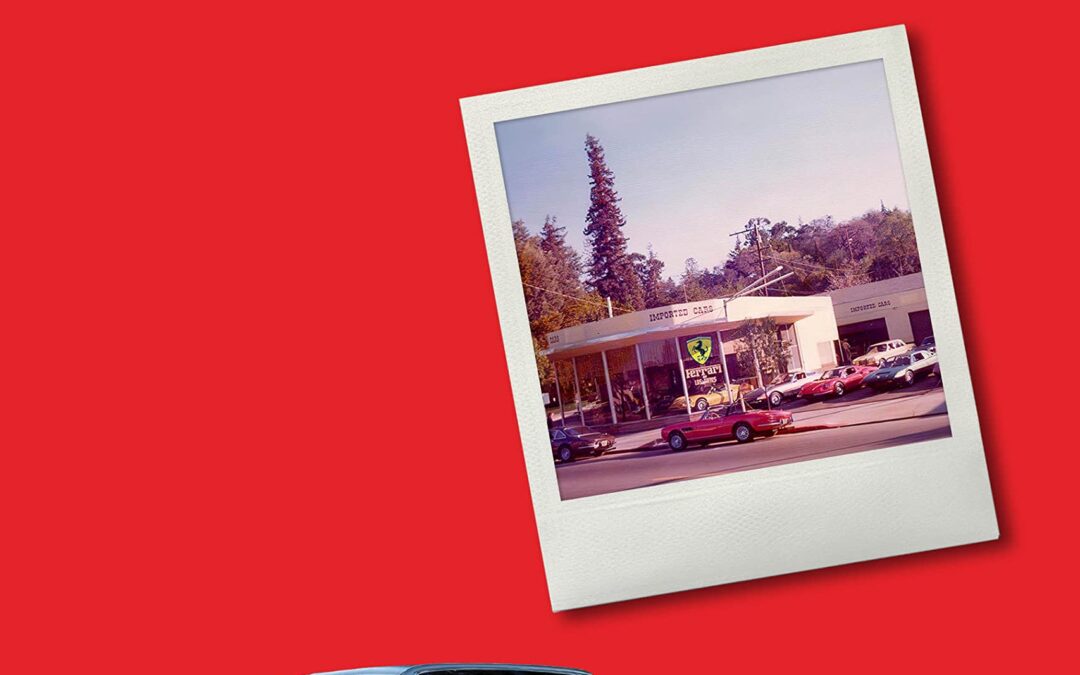
When Ferrari of Los Gatos opened, few people could afford an expensive sports car. In 1976, the average annual income was $12,686, and a new home cost about $48,000. Motorists in California could only buy gas on odd or even-numbered days based on the last digit of their license plate, due to the global oil crisis. Times were tough, and people were hesitant to take chances, especially with a car that cost more than a house.
At the same time, Brian Burnett and his friend Richard Rivoir had the idea of starting a Ferrari dealership. The Dealer is the story of how one dealership, Ferrari of Los Gatos, fueled the rise of the iconic Italian sports car in the U.S. market on its way to becoming the number one Ferrari dealer in North America. Even Enzo Ferrari himself took notice, flying Brian and the other dealers to Italy to show his appreciation for their success. Customers included movie stars, sports celebrities, entertainers, and some with unusual sources of income and a strong desire for a low profile. Along the way, Burnett made friends, enemies, and millions of dollars, only to lose everything in the blink of an eye.
Author Jim Ciardella shows readers a part of Ferrari that no one has even seen, with behind-the-scenes stories as told to him by Richard Rivoir and Brian Burnett, their customers and employees, and other North American dealers who all rode high and eventually burned out on selling fast cars.
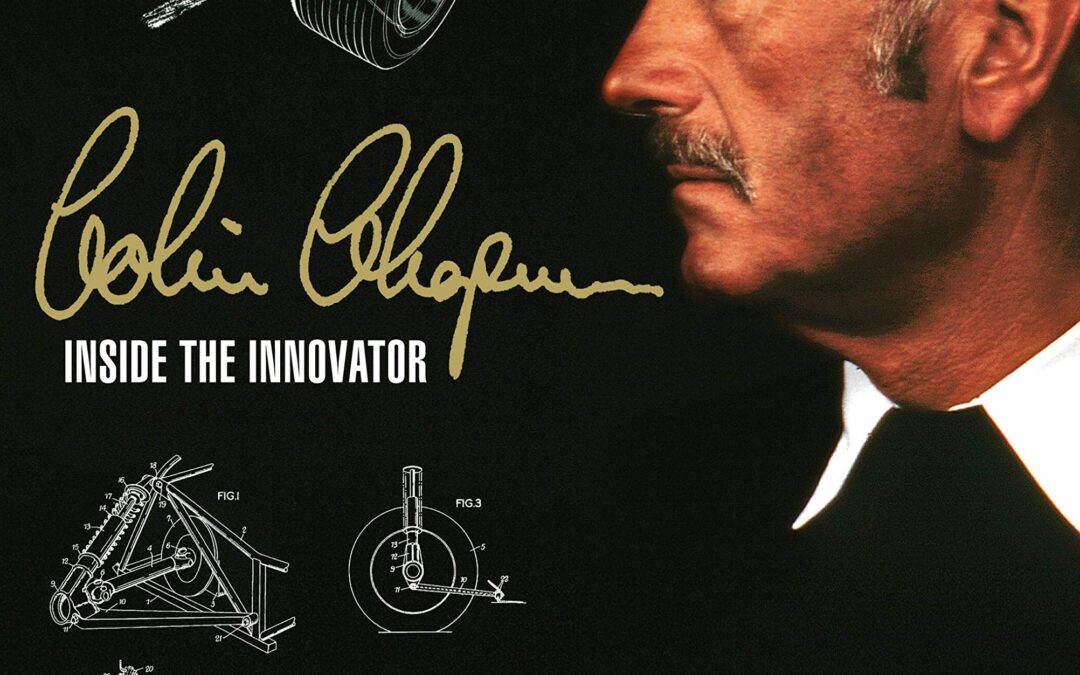
Renowned as one of the greatest creative forces in the world of the automobile, Lotus’s Colin Chapman (1928–82) left a mixed legacy. Was he an unparalleled innovator or an uninhibited exploiter of the uncredited ideas of others? In this landmark book, celebrated author Karl Ludvigsen gets to grips with the legend, digging deep beneath the skin of Chapman and his cars to explore and expose the motivations that drove this mercurial and controversial genius. Interviews with key figures in the Chapman story mesh with information from the author’s extensive archives to make this book a unique and compelling encounter between the engineer-innovator and the historian-investigator.
- Conceiving concepts: assessment of the man whom Keith Duckworth described as ‘the most brilliant conceptual engineer I’ve known’.
- Engine enterprise: recognising that he was, in his words, ‘not an engine man’, Chapman made the best of engines available to him, whether Ford 1172 side-valve, BRM H-16, Cosworth DFV V8 or Pratt & Whitney gas turbine.
- Transmission topics: this chapter moves through Lotus-designed ‘Queerbox’ transaxles, four-wheel drive, automatic clutch actuation and much more.
- Suspension sagas: from makeshift suspension ingenuity on his first Austin-based special to espousal of active suspension just before his death, Chapman gained and exploited an advanced understanding of a car’s underpinnings.
- Structure stories: Chapman’s accomplishments in this field are numerous. Best-known among them are his monocoque innovations, in glass-fibre for the Elite road car and aluminium for the F1 Type 25.
- Whittling weight: obsession with lightness was a Chapman mantra throughout his life. It contributed hugely to the success of his cars, occasionally at an expense of strength and safety that scared off some drivers.
- Aerodynamic adventures: Chapman enjoyed aerodynamics — ‘a very absorbing subject’ — and was at the forefront of major F1 developments in this area.
- Discovering downforce: early insights with wings and wedge-shaped bodies, exemplified by his Types 56 (Indycar) and 72 (F1), led ultimately to the pioneering breakthrough of traction-enhancing ground effect, which reached full flowering with the F1 Lotus 79.
- Ludvigsen gives special attention to Chapman’s exploits at Indianapolis, where he and his cars transformed the nature of America’s premier race with stunning innovations far from the safety of home.
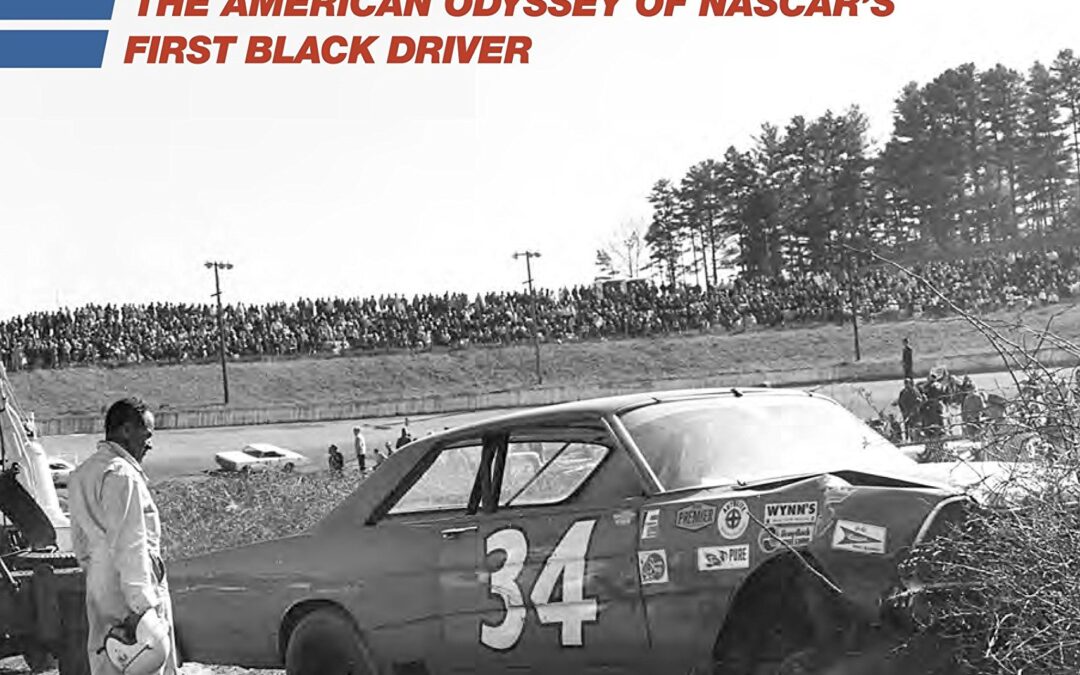
The American Odyssey of NASCAR’s First Black Driver
Hard Driving is the dramatic story of one man’s dogged determination to live the life he loved, and to compete, despite daunting obstacles, at the highest level of his sport.
Wendell Scott figured he was signing up for trouble when he became NASCAR’s version of Jackie Robinson in the segregated 1950s. Some speedways refused to let him race. “Go home, nigger,” spectators yelled. And after a bigoted promoter refused to pay him, Scott appealed directly to the sport’s founder, nascar czar Bill France Sr. France made a promise Scott would never forget – that NASCAR would never treat him with prejudice.
For the next two decades, Scott chased a dream whose fulfillment depended on France backing up that promise. Persevering through crashes, health problems, and money troubles, Scott remained convinced he had the talent to become one of NASCAR’s best.
Hard Driving documents a previously untold chapter in the history of integration, politics, and sports in America. It reveals how France, founder of the multibillion-dollar nascar empire, reneged on his pledge and allowed repeated discrimination against Scott by racing officials and other powerful figures. It details France’s alliances with leading segregationist politicians such as George Wallace, the reluctance of auto executives such as Lee Iacocca to sponsor a black driver; and the inspiring support Scott received from white drivers such as nascar champions Ned Jarrett and Richard Petty, who admired his skill and tenacity.

Between 1997 and 2014, Tom Kristensen won the world’s toughest motor race, the Le Mans 24 Hours, a record nine times and finished on the podium on five more occasions. Every time his car made it to the finish, in fact, he was in the top three. It is no wonder that this great sports car driver is known as ‘Mr Le Mans’ to motorsport fans around the world.
Now retired from racing, Kristensen shares in this book his deepest personal reflections and insights from inside and outside the cockpit. He looks back on more than 30 years spent striving for perfection in racing and tells of the battles and setbacks that sometimes seemed impossible to overcome, including a terrible accident in 2007.
- Climbing the racing ladder, from karting into Formula 3 single-seaters, including championship titles in Germany (1991) and Japan (1993), then Formula 3000 and a Formula 1 testing role with Tyrrell.
- Winning as an underdog on his first visit to Le Mans, in 1997 driving an elderly Joest-run privateer Porsche in which he impressed all onlookers with a night-time charge to vanquish Porsche’s factory-entered favourite.
- His second Le Mans victory came in 2000 on his maiden drive for Audi in the R8, a car that was to become all-conquering.
- Kristensen won the next five editions of Le Mans, four times with Audi and once with Bentley (in 2003), his last victory in this sequence taking him past Jacky Ickx’s previous record at the Circuit de la Sarthe.
- His eighth win came in one of the all-time classic contests at Le Mans, in 2008, a rollercoaster of a race in which his ageing diesel-powered Audi was never expected to beat the fancied works Peugeots.
- One more victory with Audi in 2013 sealed his reputation as a true legend of Le Mans.
- His story includes exploits at other racetracks all over the world, none more prolific than Sebring, home of America’s long-established classic endurance race that Kristensen won six times.
- Personal reflections together with contributions from notable observers — including English journalists Gary Watkins and Charles Bradley — complete a truly rounded portrait of the man and his achievements.
Voted ‘Sports Book of the Year’ when originally published in Kristensen’s native Denmark, this thoughtful memoir is now available in English.
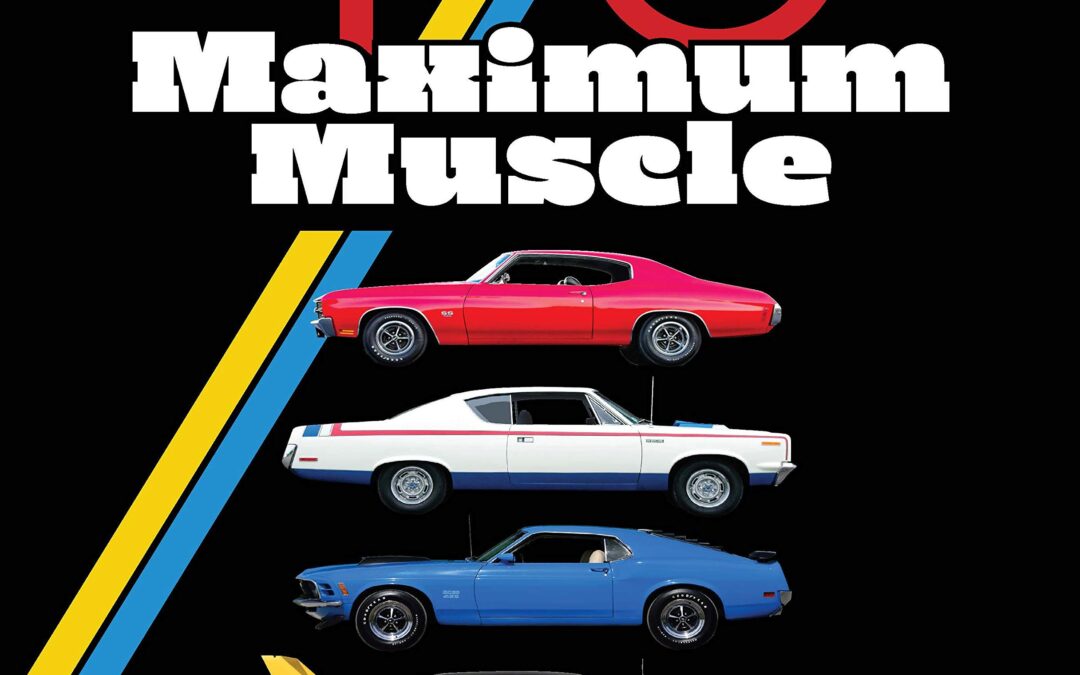
In 1970, the American muscle car was as fast and outrageous as it would ever get. But the end was nigh, and 1970 Maximum Muscle dives head-first into the storm before the calm.
Wherever you mark the beginning of the muscle car era—Oldsmobile’s 1949 Rocket 88, Chrysler’s 1951 FirePower engines, the 1964 Pontiac GTO—one thing is certain: in 1970, the era that had witnessed a parade of gloriously powerful, stylish, and brawny cars apt to make the hearts of even the most dispassionate squares go pitter-patter was sucking fumes. Gasoline shortages, skyrocketing fuel prices, insurance-industry bean counters, rising ecological concerns, and new, more fuel-efficient imports all conspired to consign the American muscle car to an ugly and unseemly denouement. Yet 1970 saw the actual zenith of the cars themselves, the year manufacturers pulled out all the stops and produced the most powerful and stunning machines the automotive world had ever seen.
1970 Maximum Muscle not only explores the factors that led to the decline of the most exciting era in the American automotive industry, it details some of the new models and model options that arguably made 1970 the climax of the muscle car era from engineering, styling, and cultural standpoints. As the war among GM, Ford, Chrysler, and AMC played out at dealerships, dragstrips, and drive-ins, ready-and-willing gearheads drove off dealer lots in potent behemoths like the Buick GSX, Oldsmobile 4-4-2, and Ford Torino Cobra. Muscle car stalwarts like the SS Chevelle, Pontiac GTO, and Plymouth ’Cuda became available with optional LS-6, Stage 1, and Hemi engines, respectively. Manufacturers ratcheted up the advertising hyperbole at the same time, offering performance packages with names like “Six-Pack,” “Ram Air,” and “Cobra Jet,” while spoilers, scoops, hood tachometers, and decal packages were de rigueur. Meanwhile, on the popular SCCA Trans Am circuit, top drivers campaigned more nimble muscle off-the-rack cars like the Camaro Z/28 and Boss 302 Mustang.
1970 Maximum Muscle is an entertaining and rollicking look at the muscle car’s peak year!
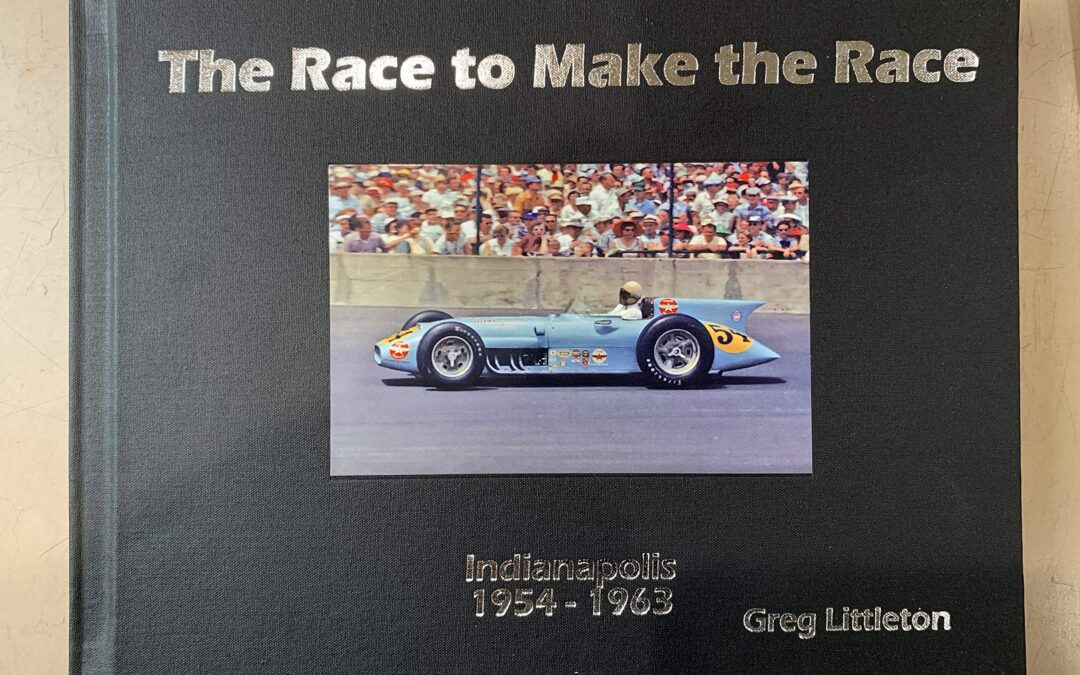
SIGNED
In his new book “The Race to Make the Race” Littleton chronicles a 10-year span (1954-1963) which was the peak roadster years at Indy and records what went on for every qualification attempt during this time period and each lap speed even if the attempt was yellow flagged. There is no mention of the races themselves as those results have been well-documented over the years.
Today’s 500 is lucky to attract 33 cars some years, but there was a time when the 500 really did have an actual Month of May and sometimes more cars went home than made the starting fields. Littleton’s book records by the actual time of day, weather conditions, attendance and all of the other happenings both on the track and in the Garage Area.
There are a lot of details in the book that you will never see anywhere else today. During the years in question the drama around the efforts to find speed just to qualify were often nearly as interesting as the actual race.
“While I was doing the Roadsters book I got the idea about doing a book on qualifications for the Indy 500,” said Littleton. “I got some qualifying information from the Speedway records when I was doing my first book. It was fun to do. I wanted to give the story on the successes and struggles each driver went through to try and make the Indianapolis 500 those years. The Bartholomew County Library was a big help in assisting me. They were able to get the microfilms from the Indiana State Library. I probably made 75 trips down to the local library to gather the information I needed.”
Littleton also mentioned two of the area’s standout racers at Indianapolis. Larry Crockett of Columbus who was the fastest rookie qualifier in 1954 and in the 500-mile race that year he ended up being the top finishing rookie over Pat O’Connor of North Vernon.
Littleton said Crockett, who died in a racing accident in Pennsylvania in 1955 right before he would have attempted to make his second Indianapolis 500, would have been a candidate to win the Indy 500.
“He was so young when he was starting out,” he said. “Nobody knows how his career would have turned out. If he had three or four years on him then I could have given you a better estimate on him. He was fast enough. There were some brave souls in 1954 and they said Larry Crockett was the best young driver in the United States.”
Like Crockett, Littleton gave his assessment on O’Connor who was killed in a first-lap accident in the 1958 race if he too could have won the Indy 500.
“Pat O’Connor definitely could have been an Indy 500 champion,” he said. “The legend of Pat O’Connor just keeps growing around here. You talk to guys and there is no doubt he was a natural. He was so smooth; everything came easy for him. He had the right head for it. He knew the days the car was good enough and the days it wasn’t.”
In documenting every lap of time trials during the 10-year span he chronicled there was one driver that stood out when writing the book was a young driver named Bob Scott in 1954.
“He had a good car in ’54 and on the fourth and final day of qualifying he was not in the show yet,” Littleton explains. “He jumped into a car that was not considered top-of-the-line equipment. He put three good laps together and they were going to be good enough to put him in the race, all he needed was one more consistent lap and he was in, but before he took the checkered flag he pulled into the pits and thus he didn’t qualify for the starting field. He apparently didn’t look at the flagman. He never did say why he pulled off.”
If Littleton had to pick a Mount Rushmore of Indy 500 champions his list would include: Bill Vukovich, A.J. Foyt, Wilbur Shaw and Al Unser Sr. Littleton also gave mention to 1963 winner Parnelli Jones.
“He was probably the least successful great race driver,” he said. “He would consistently beat Foyt in sprint cars, but he only won Indy once.”
On the sale last month of the Indianapolis Motor Speedway to Roger Penske, Littleton had this to say.
“Who else cares enough about racing and has the business acumen than Roger Penske?,” he asked. “He has everything that can make it work. Every decision he makes you may not like, but he has the best interest of the speedway in mind.”
Penske becomes the fourth owner of the track. The Hulman family had owned the track for 74 years.
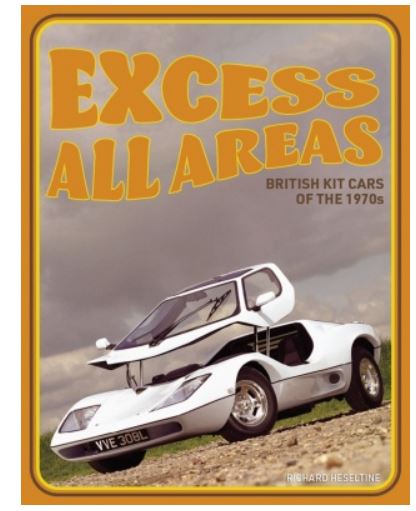
The 1970s witnessed the rebirth of the British kit car. It may have been the decade that taste forgot, but it was also a period where nothing was off limits. Would sir or madam like their car with three wheels or six? How about a windscreen that handily doubles as a door? Perchance something more along the lines of an Edwardian ‘horseless carriage’ with no doors at all? Alternatively, maybe a sports car with a roof at waist level, or even a trike made of timber? How about endless permutations of all of these things and more? Excess All Areas – British Kit Cars of the 1970s is a bountifully-illustrated celebration of homemade cars at their best – and worst.
Author Richard Heseltine is a journalist, author and biographer. A former staff member on Classic & Sports Car and Motor Sport, he has written extensively for Octane, Magneto, Classic Cars, Auto Italia, Autosport and Absolute Lotus. Richard has authored books on subjects as diverse as the British specialist sports car industry and coachbuilt Ferraris. He became a published novelist in 2019 with the release of Life Near The Edge.
“It’s a book as much about lost car culture as it is about the cars themselves” Classic Cars magazine
“My personal book of the year… a fact laden gem” Steve Hole, TKC
“This is a great fun book… right up our street in creativity, ingenuity or just plain wackiness” Jeroen Booij, Maximum Mini
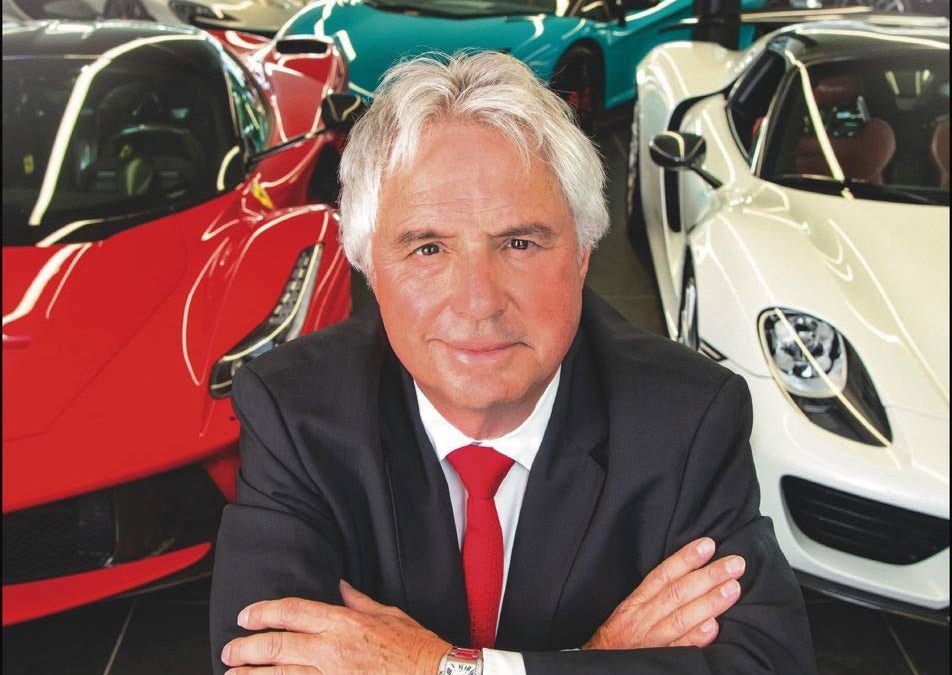
The car world is full of fascinating characters, but few have a story to tell quite as remarkable and inspirational as Tom Hartley.
Walking out of school at the age of 11, unable to read or write, Hartley set up his own business buying and selling cars. From that moment, he defied logic and ripped up the rule book on his way to the top. Today he runs one of the most successful independent family run performance and luxury car businesses in the world. He has built up an unrivaled reputation as “The Dealmaker.”
Tom has been at the top for over 40 years, survived and thrived through four recessions, and overcome three life threatening illnesses. In his own brutally honest words, Hartley tells his gripping story of a boy from a traditional Romany family who swapped the classroom for the cut-throat world of Glasgow’s car auctions, buying and selling his first car at the age of 12. Having decided to drive himself around illegally, he was only 15 when he had his first car crash, and they don’t come more spectacular than writing off a Ferrari Dino – nothing has ever been normal in the world of Tom Hartley!
Hartley had made his first million by the age of 17, but soon suffered major setbacks as his business went bust, and he found himself at risk of losing his sight without major surgery. Hartley started all over again, living in a mobile home with his wife and working from the back of a car. He had gone from hero to zero, but his burning desire to be the best saw him climb his way back to the top. His ability to clinch deals in some of the most bizarre places has become legendary, like buying a car in a sauna, while stuck in a traffic jam on a motorway, and even in a swimming pool!
Family has played a key part in the Tom Hartley story, his wife has been at his side all the way, and his two sons have followed closely in their father’s footsteps. Indeed Tom’s belief in family is one of the inspiring messages that comes through.
Hartley’s inspirational story is about the unshakeable belief in his own abilities, from a precocious schoolboy who had a dream, and then through sheer hard work and a burning desire to make the dream come true. This is not just a book for car enthusiasts but for anyone who has dared to dream. It’s a story that will inspire and motivate, and proves you can make the wildest dream come true if you want it badly enough.
Tom’s remarkable story is written with the collaboration of journalist Ken Gibson, for 24 years, award-winning Motoring Editor of The Sun newspaper.
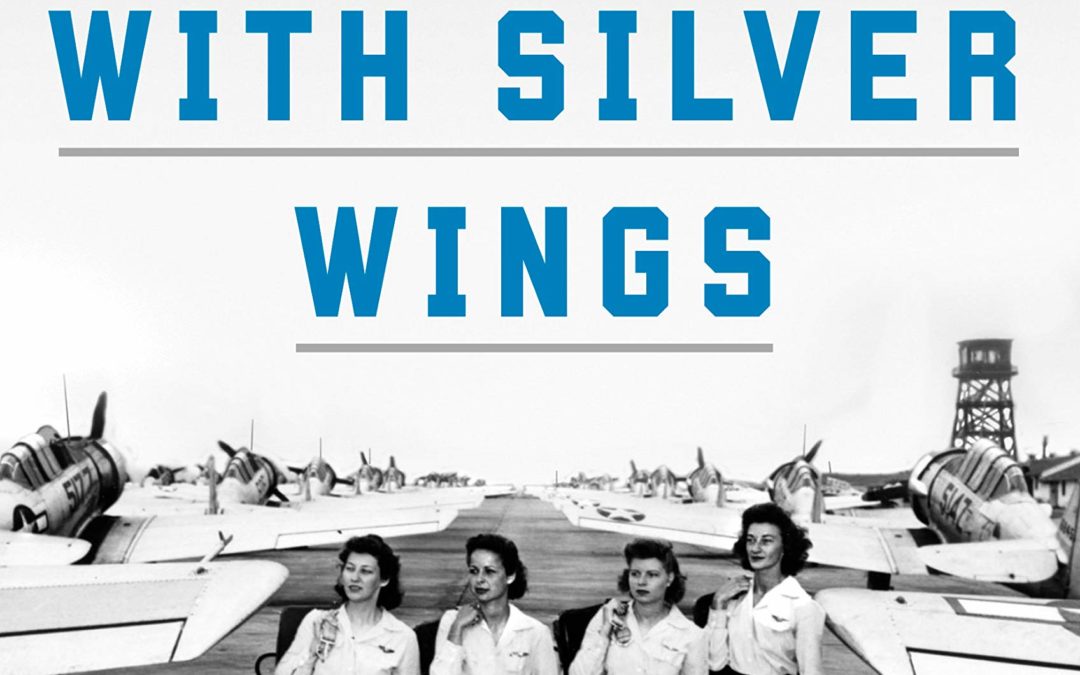
“With the fate of the free world hanging in the balance, women pilots went aloft to serve their nation. . . . A soaring tale in which, at long last, these daring World War II pilots gain the credit they deserve.”—Liza Mundy, New York Times bestselling author of Code Girls
When the Japanese attacked Pearl Harbor in December 1941, Cornelia Fort was already in the air. At twenty-two, Fort had escaped Nashville’s debutante scene for a fresh start as a flight instructor in Hawaii. She and her student were in the middle of their lesson when the bombs began to fall, and they barely made it back to ground that morning. Still, when the U.S. Army Air Forces put out a call for women pilots to aid the war effort, Fort was one of the first to respond. She became one of just over 1,100 women from across the nation to make it through the Army’s rigorous selection process and earn her silver wings.
The brainchild of trailblazing pilots Nancy Love and Jacqueline Cochran, the Women Airforce Service Pilots (WASP) gave women like Fort a chance to serve their country—and to prove that women aviators were just as skilled as men. While not authorized to serve in combat, the WASP helped train male pilots for service abroad, and ferried bombers and pursuits across the country. Thirty-eight WASP would not survive the war. But even taking into account these tragic losses, Love and Cochran’s social experiment seemed to be a resounding success—until, with the tides of war turning, Congress clipped the women’s wings. The program was disbanded, the women sent home. But the bonds they’d forged never failed, and over the next few decades they came together to fight for recognition as the military veterans they were—and for their place in history.
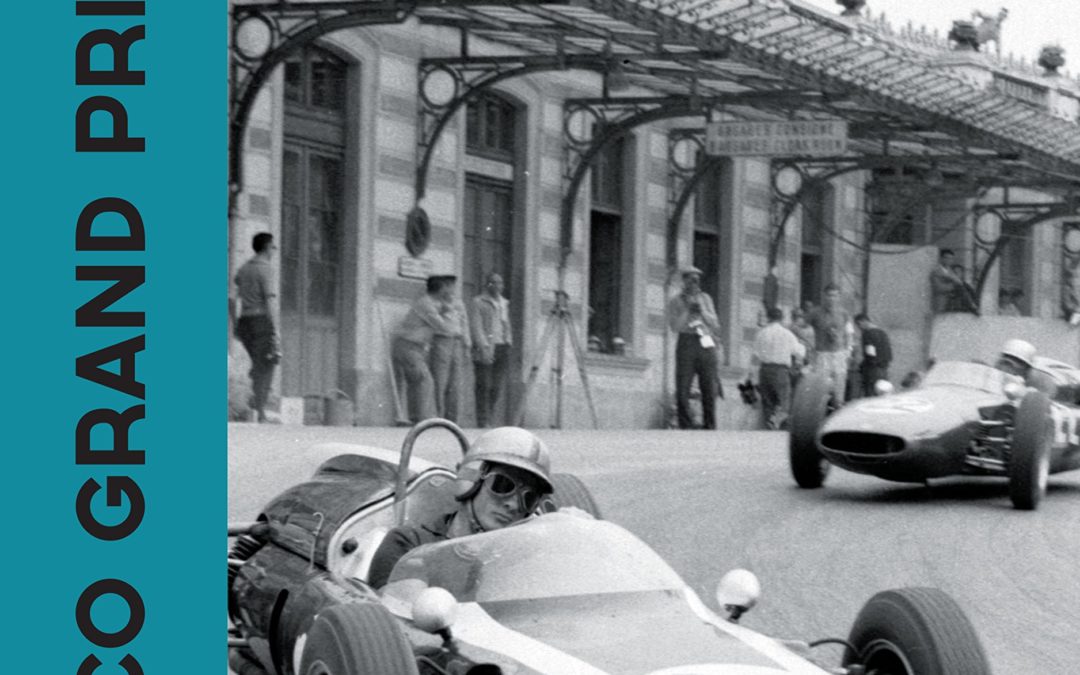
Go behind the scenes to explore the history, racing, celebrity fans, and after hours of racing’s most glamorous and prestigious round in the F1 championship with The Life Monaco Grand Prix.
Monaco sponsored its first race in 1929 and the circuit has been part of the Formula 1 series since 1950. Conducted with the patronage of Monaco’s royal family, its beautiful street-circuit has made Monaco the most glamorous setting of any F1 race. But the classic architecture and high-profile spectators belie a course notorious for its complexity and challenges. With no safety barriers until 1969, drivers have twice plunged into the harbor among the spectating yachts.
Off the circuit, Monaco is a 24-hour spectacle of expensive boats, high-profile parties, celebrity F1 fans, penthouse spectating, and high-roller lifestyle. From the Monte Carlo casino (integral to numerous James Bond films) to top clubs like Amber Lounge, Jimmy’z, and The Black Lounge to F1 racers’ luxury homes to the takeoffs and landings of countless private jets, Monaco represents the epitome of the jet-setting lifestyle long associated with the F1 circus.
From the first Grand Prix in 1929 to today’s star-studded event, The Life Monaco Grand Prix takes the reader on a full lap of this prestigious race.
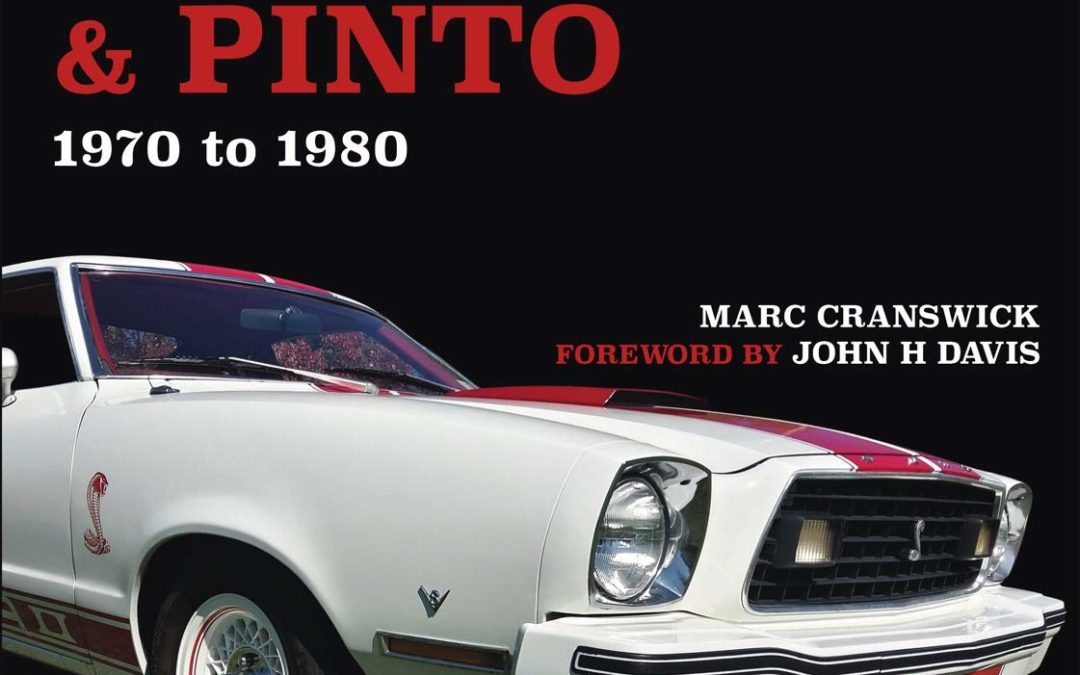
The story of Ford’s original, home-grown small cars, the Mustang II and Pinto. Follow their progress through a difficult decade when Henry took on the imports, battled bureaucracy and gave America the economy and sports luxury subcompacts they wanted.
This book details the successful design, building and sale of these small American Fords that faced domestic and foreign rivals. Mustang II and Pinto went through many permutations, appearance and performance packages – options that have helped the cars become collectible classics, and are prime examples of the decade the pony car survived.
Going beyond stock standard were the customizers and racers that pushed the cars and their designs to the limit. Mustang II and Pinto graced enthusiast car magazine covers, and became stars in TV and films. They were small cars that made a big impact, and kept the Mustang galloping.
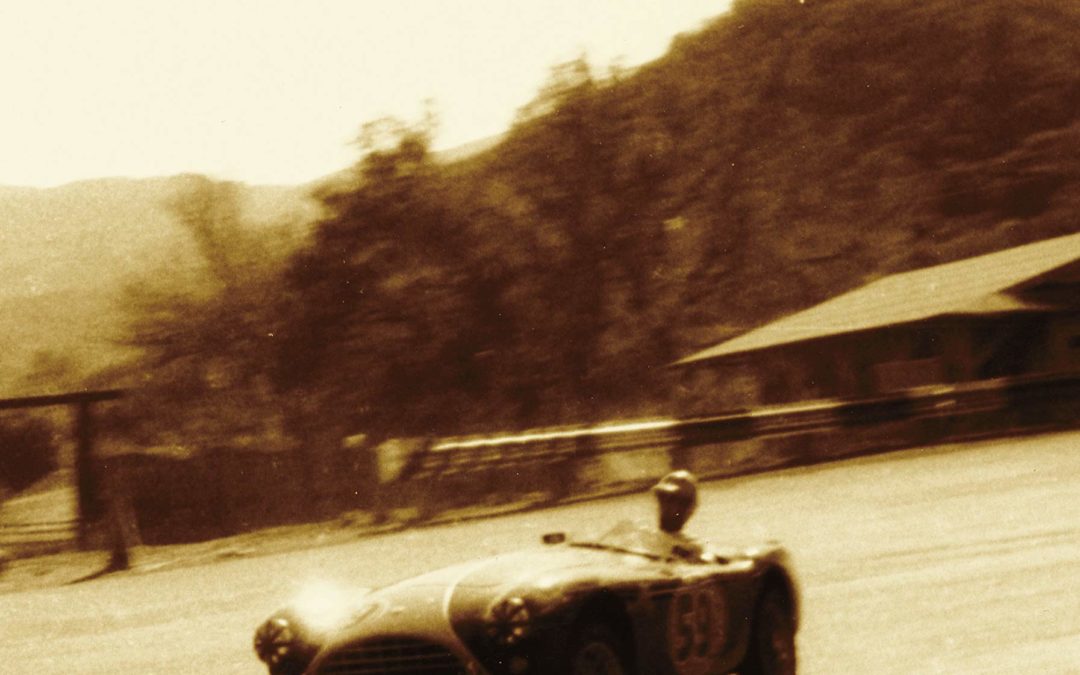
In California, the popularity of all kinds of motor sports reached its peak in the mid-20th century. None was more exotic or glamorous than the type commonly called road racing. Southern California Road Racing is a collection of historic photographs that depicts all the action and excitement of the golden age of motor sports. The images in this book will take you back to the days when the best cars Europe had to offer competed with homebuilt specials over world-famous road courses like Laguna Seca, Willow Springs, Glen Helen, and Riverside International, plus show all the cars and people that made it happen.
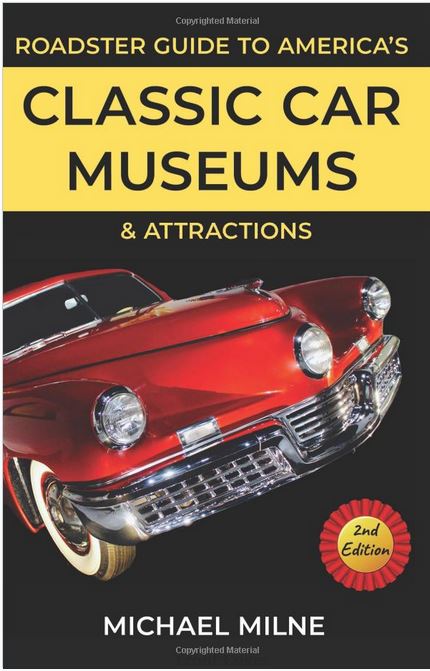
Introducing the updated and expanded 2019 Second Edition of the perfect tool for anyone who loves vintage and collector cars!
Motoring from coast to coast, this new edition of the
Roadster Guide to America’s Classic Car Museums & Attractions features more than 300 auto-themed sights.
Ranging from the Stanley Museum in Maine to the San Diego Automotive Museum, the book helps car buffs plan exciting adventures, or discover a fun car museum close to home. Whether it’s Model Ts, the “tail fin” era, muscle cars, elegant roadsters, early race cars, vintage trucks, and so much more, fans of classic cars will find all their favorites in one place in this comprehensive 400-page book packed with more than 60 photos.
With a focus on museums that are open to the public, the destinations run the gamut from full-throttle collections, like the Auburn Cord Duesenberg Museum and the Petersen Automotive Museum, to smaller treasures like the Franklin Automobile Museum in Arizona, the Studebaker National Museum in Indiana, and Ohio’s National Packard Museum.
This unique travel guide also includes intriguing automotive sights like:The Tucker Trail in Pennsylvania, where you can see five Tuckers in one day; two Frank Lloyd Wright designed service stations; and Carhenge in Nebraska (it’s a quirky re-creation of Stonehenge made out of vintage American sedans), and many, many more.
Bring the Roadster Guide to America’s Classic Car Museums & Attractions along on your next road trip to discover fascinating car museums and vintage car attractions across America.
Printed in the USA.





















